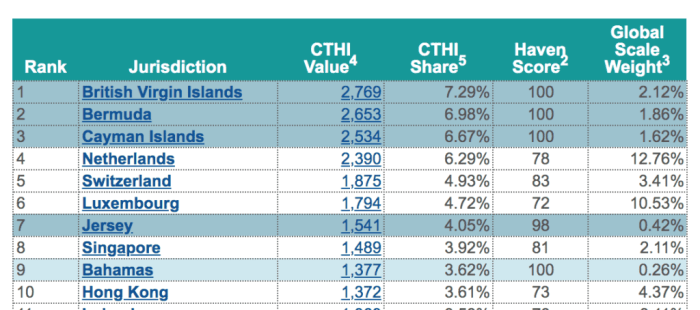The Accounting Complexities of Multi-Currency Business Operations present a unique set of challenges for businesses operating internationally. Navigating fluctuating exchange rates, diverse accounting standards (like IFRS and GAAP), and complex tax regulations across multiple jurisdictions requires meticulous planning and execution. This exploration delves into the intricacies of managing finances in a globalized marketplace, providing insights into best practices, risk mitigation strategies, and the role of technology in streamlining multi-currency accounting.
From processing transactions and recording them accurately to presenting these transactions in financial statements that comply with international standards, every step requires careful consideration. Understanding the impact of exchange rate volatility on financial reporting, implementing effective hedging strategies, and ensuring robust internal controls are crucial for maintaining financial health and regulatory compliance.
Introduction to Multi-Currency Accounting
Managing finances across multiple currencies presents a unique set of challenges for businesses operating internationally. The complexities arise from fluctuating exchange rates, differing accounting standards, and the need for accurate translation and consolidation of financial statements. Understanding these challenges and implementing robust accounting procedures is crucial for maintaining financial accuracy, complying with regulations, and making informed business decisions.
The core issue lies in the constant fluctuation of exchange rates. A transaction recorded in one currency today might have a significantly different value in another currency tomorrow, impacting the reported financial position and performance of the company. This volatility necessitates careful tracking of exchange rates and the application of appropriate accounting methods to accurately reflect these changes. Furthermore, navigating the intricacies of various accounting standards adds another layer of complexity.
Accounting Standards for Multi-Currency Transactions
International Financial Reporting Standards (IFRS) and Generally Accepted Accounting Principles (GAAP) are the two primary sets of accounting standards used globally. Both address multi-currency transactions, but their specific requirements differ in certain aspects. IFRS 21, for example, provides guidance on the functional currency, translation of foreign currency transactions, and the recognition of exchange differences. Similarly, GAAP offers specific guidance on foreign currency transactions and hedging, emphasizing the importance of consistent application of accounting methods. Understanding the nuances of these standards is vital for accurate financial reporting and compliance.
Common Multi-Currency Business Scenarios
Several common scenarios illustrate the complexities of multi-currency accounting. For instance, a company might have subsidiaries in different countries, each operating in its local currency. Consolidating the financial statements of these subsidiaries requires translating each subsidiary’s financial statements into a single reporting currency, usually the parent company’s functional currency. This translation process involves applying appropriate exchange rates and recognizing any resulting exchange gains or losses.
Another common scenario involves international sales and purchases. A company selling goods or services to a customer in a foreign country will typically receive payment in that customer’s currency. The company must then translate the foreign currency receivables into its functional currency at the prevailing exchange rate. Conversely, purchasing goods or services from a foreign supplier requires translating the payable into the functional currency. These transactions necessitate careful monitoring of exchange rates to accurately reflect the financial impact on the company’s profitability and cash flow.
A third scenario involves hedging against foreign exchange risk. Companies often use hedging strategies, such as forward contracts or options, to mitigate the impact of exchange rate fluctuations on their future transactions. The accounting treatment of these hedging instruments varies depending on the type of hedge and the applicable accounting standards. Accurate accounting for hedging activities is essential for providing a clear and accurate picture of the company’s financial position and risk exposure.
Foreign Exchange Rate Fluctuations and Their Impact

Operating a business across multiple currencies exposes the company to the inherent risk of exchange rate fluctuations. These fluctuations can significantly impact a company’s financial statements, profitability, and overall financial health. Understanding these impacts and employing effective risk management strategies is crucial for maintaining financial stability.
Impact on Financial Reporting
Exchange rate volatility directly affects the translation of foreign currency transactions into the reporting currency. For example, a company reporting in US dollars that sells goods to a European customer in Euros will see the US dollar equivalent of the revenue fluctuate depending on the EUR/USD exchange rate at the time of the transaction and the reporting period. This variability can lead to inconsistencies in reported revenue and profit margins from period to period, making financial performance comparisons challenging. Furthermore, the value of foreign currency assets and liabilities held on the balance sheet will also be affected, impacting the overall reported financial position. This necessitates the use of consistent and transparent accounting methods to accurately reflect the impact of these fluctuations.
Foreign Exchange Risk Management Strategies
Several methods exist to mitigate the financial risks associated with exchange rate volatility. These methods, often referred to as hedging strategies, aim to reduce the uncertainty associated with future exchange rates.
Hedging Strategies
One common hedging strategy is using forward contracts. A forward contract is an agreement to exchange one currency for another at a predetermined exchange rate on a specific future date. This locks in the exchange rate, eliminating the uncertainty associated with future fluctuations. Another approach involves using futures contracts, which are standardized contracts traded on exchanges. These provide a similar level of certainty but offer more liquidity. Options contracts offer flexibility. They provide the right, but not the obligation, to buy or sell a currency at a specific exchange rate on or before a certain date. This allows companies to protect themselves against adverse movements while retaining the potential to benefit from favorable movements. Finally, currency swaps allow companies to exchange principal and interest payments in different currencies, providing a longer-term hedging solution. The choice of hedging strategy depends on factors such as the company’s risk tolerance, the size and timing of the foreign currency exposure, and the availability of hedging instruments.
Comparison of Exchange Rates
The choice of exchange rate used in accounting significantly influences the reported financial results. The spot rate is the current exchange rate at which currencies are traded. Using the spot rate reflects the immediate market value, but it can lead to volatility in reported results. The forward rate, as mentioned earlier, is the exchange rate agreed upon for a future transaction. Using the forward rate reduces uncertainty but may not perfectly reflect the actual exchange rate at the time of settlement. Other methods include the average rate over a period, which smooths out fluctuations, and the historical rate, which reflects the rate at the time of the initial transaction. Each method has its advantages and disadvantages, and the choice depends on the specific circumstances and accounting standards followed.
Impact of Different Exchange Rate Scenarios
The following table illustrates how different exchange rate scenarios impact the reported transaction value. This example assumes a hypothetical transaction where a US company purchases goods from a UK supplier.
| Transaction Date | Currency | Exchange Rate (GBP/USD) | Transaction Value in USD |
|---|---|---|---|
| October 26, 2023 | GBP | 1.10 | $110,000 |
| October 26, 2023 | GBP | 1.15 | $115,000 |
| October 26, 2023 | GBP | 1.05 | $105,000 |
(Note: This table assumes a GBP 100,000 transaction value. The USD value is calculated by multiplying the GBP value by the respective exchange rate.)
Transaction Processing and Recording
Managing transactions in a multi-currency environment requires a robust and accurate system. The process differs significantly from single-currency accounting due to the constant fluctuation of exchange rates and the need to maintain consistent financial reporting across multiple currencies. Effective transaction processing ensures accurate financial statements and avoids potential compliance issues.
The process of recording transactions in multiple currencies involves several key steps, beginning with the initial transaction in the foreign currency. This necessitates a clear and consistent method for recording the transaction at the spot exchange rate prevailing at the time of the transaction. Subsequently, any differences arising from exchange rate fluctuations are recognized and recorded as gains or losses. This process is crucial for accurate financial reporting and effective management of foreign exchange risk.
Potential Errors in Multi-Currency Transaction Processing
Errors in multi-currency transaction processing can stem from various sources, including incorrect exchange rate application, inconsistent accounting methods, and data entry mistakes. Using outdated or incorrect exchange rates can lead to significant discrepancies in financial statements. Inconsistent application of accounting methods across different currencies can create confusion and make reconciliation challenging. Simple data entry errors, while seemingly minor, can have a compounding effect on the overall accuracy of financial reporting. These errors can result in inaccurate financial statements, potential audit issues, and incorrect tax filings.
Best Practices for Multi-Currency Accounting Accuracy
Maintaining accuracy and consistency in multi-currency accounting requires adherence to best practices. These include using a reliable and up-to-date exchange rate source, implementing robust internal controls to prevent errors, and regularly reconciling accounts. Adopting a standardized chart of accounts across all currencies simplifies reporting and analysis. Regular training for accounting staff on multi-currency accounting principles and procedures is also crucial. Automation of processes, where feasible, can minimize manual data entry errors and increase efficiency. Finally, a strong internal audit function can help identify and rectify potential issues before they escalate.
Step-by-Step Guide for Processing a Multi-Currency Sales Invoice
Processing a multi-currency sales invoice involves a methodical approach to ensure accuracy.
- Record the Invoice in the Foreign Currency: The invoice is initially recorded in the customer’s local currency (e.g., Euros). The invoice amount (e.g., €10,000) and the invoice date are meticulously noted.
- Determine the Exchange Rate: The spot exchange rate on the invoice date (e.g., €1 = $1.10) is obtained from a reliable source. This rate will be used to convert the invoice amount to the company’s functional currency (e.g., USD).
- Convert the Invoice to Functional Currency: The invoice amount in the foreign currency is converted to the functional currency using the determined exchange rate (€10,000 x $1.10/€1 = $11,000). This converted amount is recorded in the company’s accounting system.
- Record the Transaction: The transaction is recorded in the general ledger, reflecting both the foreign currency amount and the functional currency equivalent. This ensures a complete and auditable record of the transaction.
- Monitor Exchange Rate Fluctuations: At the end of each reporting period, any difference between the initial exchange rate and the current exchange rate is recognized as a foreign exchange gain or loss and recorded accordingly. This reflects the impact of exchange rate movements on the transaction.
For example, if the exchange rate changes to €1 = $1.12 by the end of the month, a foreign exchange gain of $200 ($11,200 – $11,000) would be recognized. Conversely, if the rate fell to $1.08, a loss of $200 would be recorded. This process ensures that the financial statements accurately reflect the impact of exchange rate fluctuations on the company’s financial position.
Financial Statement Presentation

Multi-currency transactions significantly impact the presentation of financial statements, requiring careful consideration and adherence to relevant accounting standards. The complexity arises from fluctuating exchange rates, which necessitate consistent and transparent reporting to accurately reflect the financial position and performance of a multinational business. Proper presentation ensures stakeholders have a clear understanding of the company’s financial health.
The reflection of multi-currency transactions in financial statements involves translating foreign currency balances and transactions into the reporting currency (usually the company’s functional currency). This translation process utilizes exchange rates prevailing at specific points in time, depending on the nature of the transaction and the applicable accounting standard (e.g., IFRS or US GAAP). These standards dictate the methods used for translation, impacting the reported amounts of assets, liabilities, revenues, and expenses.
Foreign Currency Translation Methods
Several methods exist for translating foreign currency balances and transactions. The choice of method depends on factors such as the currency of the foreign operation’s functional currency and its relationship to the reporting currency. The most common methods are the current rate method and the temporal method. The current rate method translates assets and liabilities at the current exchange rate at the balance sheet date, while the temporal method uses historical exchange rates for certain items. The selection of the appropriate method significantly impacts the reported financial figures.
Required Disclosures under Accounting Standards
Accounting standards like IFRS and US GAAP mandate specific disclosures related to foreign currency transactions. These disclosures aim to provide transparency and allow users of the financial statements to understand the impact of exchange rate fluctuations on the company’s financial position. Crucial disclosures often include the accounting policies used for foreign currency translation, the amounts of exchange gains and losses recognized in the income statement, and a reconciliation of the beginning and ending balances of foreign currency accounts. Failure to provide these disclosures can lead to misinterpretations of the financial statements.
Presentation of Foreign Currency Balances and Transactions
Foreign currency balances are presented in the financial statements after being translated into the reporting currency using the appropriate method. For example, a company’s accounts receivable in Euros would be converted to the reporting currency (e.g., US dollars) using the current exchange rate at the balance sheet date. Similarly, transactions denominated in a foreign currency are translated at the exchange rate prevailing on the transaction date. Any resulting exchange gains or losses are recognized in the income statement.
Sample Balance Sheet
The following is a simplified example of a balance sheet demonstrating the presentation of assets and liabilities in multiple currencies. Note that this is a simplified illustration and does not encompass all potential complexities. The actual presentation will depend on the specific accounting policies and the nature of the company’s foreign currency transactions.
| Account | USD | EUR | GBP |
|---|---|---|---|
| Cash and Cash Equivalents | $100,000 | €50,000 | £25,000 |
| Accounts Receivable | $50,000 | €20,000 | £10,000 |
| Total Assets | $150,000 | €70,000 | £35,000 |
| Accounts Payable | $20,000 | €15,000 | £8,000 |
| Total Liabilities | $20,000 | €15,000 | £8,000 |
Note: This table assumes that the reporting currency is USD and shows the translated values. The actual amounts in USD would depend on the applicable exchange rates at the balance sheet date.
Tax Implications of Multi-Currency Operations
Operating a business across multiple countries introduces significant tax complexities beyond the usual accounting challenges. The diverse tax laws, regulations, and reporting requirements of different jurisdictions necessitate a thorough understanding to ensure compliance and potentially optimize tax liabilities. Failure to navigate these complexities effectively can lead to substantial financial penalties and reputational damage.
The core challenge lies in the conversion of transactions and balances from various currencies into a single reporting currency for tax purposes. This process is influenced by fluctuations in foreign exchange rates, potentially impacting taxable income and creating discrepancies between accounting and tax reporting. Furthermore, the determination of a company’s tax residency and the allocation of income across different jurisdictions can be intricate, particularly for multinational corporations with complex organizational structures.
You also can investigate more thoroughly about Understanding Revenue Recognition in Financial Statements to enhance your awareness in the field of Understanding Revenue Recognition in Financial Statements.
Tax Reporting in Multi-Currency Environments
Accurate tax reporting in multi-currency environments requires meticulous record-keeping and a robust understanding of relevant tax treaties and conventions. Each transaction must be properly documented, including the original currency, the exchange rate used for conversion, and the date of the transaction. This detailed information is crucial for reconciling accounting records with tax returns and for supporting any adjustments made due to foreign exchange rate fluctuations. Tax authorities often require specific reporting formats and supporting documentation, varying considerably across countries. Inconsistencies or omissions can result in delays, penalties, and audits.
Tax Optimization Strategies
While tax optimization should always be conducted within legal and ethical boundaries, several strategies can help multinational businesses minimize their overall tax burden. These include leveraging tax treaties to reduce double taxation, strategically locating assets and operations to benefit from favorable tax regimes, and implementing effective transfer pricing policies to allocate income appropriately among different subsidiaries. Expert tax advice is crucial in this area to ensure compliance and maximize the benefits of available strategies. Careful planning and proactive engagement with tax authorities can also mitigate potential disputes.
Examples of Tax Regulations Affecting Multi-Currency Transactions
The specific tax regulations governing multi-currency transactions vary significantly depending on the countries involved. For instance, in the United States, the Internal Revenue Service (IRS) utilizes a specific exchange rate for tax reporting purposes, often the average exchange rate for the relevant period. Conversely, other countries might use the exchange rate prevailing on the transaction date. Value Added Tax (VAT) or Goods and Services Tax (GST) regulations also differ considerably across countries, impacting the taxability of cross-border transactions. For example, the EU has a relatively harmonized VAT system, while other regions may have more fragmented approaches. Furthermore, withholding tax rates on cross-border payments can vary substantially, requiring careful planning to minimize tax liabilities. A multinational company might encounter different rules regarding the deductibility of foreign taxes paid, leading to complex calculations and potential credits or offsets.
Internal Controls and Compliance
Operating a multi-currency business introduces significant complexities to accounting processes. Robust internal controls are paramount to mitigate risks associated with these complexities, ensuring accurate financial reporting, preventing fraud, and maintaining compliance with relevant regulations. A well-defined internal control framework is not merely a compliance requirement; it’s a crucial element of sound financial management in a globalized business environment.
Effective internal controls are essential for maintaining the integrity of multi-currency accounting. Without them, the organization faces increased exposure to errors, fraud, and regulatory penalties. These controls provide a framework for managing financial risks, promoting accuracy in financial reporting, and fostering trust among stakeholders. The implementation of such controls should be viewed as a continuous improvement process, regularly reviewed and adapted to address emerging risks and changing regulatory landscapes.
Preventing Fraud and Errors in Multi-Currency Transactions
Preventing fraud and errors requires a multi-layered approach incorporating segregation of duties, authorization controls, and reconciliation processes. Segregation of duties ensures that no single individual has complete control over a transaction, reducing opportunities for manipulation. For example, the person authorizing a payment should be different from the person processing the payment and reconciling the bank statement. Strong authorization controls, including limits on transaction values requiring multiple approvals, further restrict unauthorized activities. Regular reconciliation of transactions across different systems and bank statements helps to identify discrepancies and potential errors promptly. Furthermore, the use of automated systems with built-in validation checks can significantly reduce manual errors. A robust audit trail, meticulously documenting all transactions and approvals, is critical for detecting and investigating any irregularities.
Ensuring Compliance with Relevant Regulations and Standards
Compliance with international accounting standards (like IFRS) and local regulations is crucial for multi-currency businesses. This involves understanding and applying the correct exchange rates for transactions, properly classifying foreign currency gains and losses, and adhering to reporting requirements in each jurisdiction where the business operates. Regular training for accounting staff on relevant regulations and best practices is essential. Maintaining comprehensive documentation of all compliance efforts, including policies, procedures, and audit trails, is vital for demonstrating compliance to regulatory bodies. External audits can provide an independent assessment of the organization’s compliance posture and identify areas for improvement. Engaging with legal and tax professionals specializing in international business operations can provide valuable guidance on navigating the complexities of multi-currency compliance.
Key Internal Controls Checklist for Multi-Currency Accounting Processes
Implementing a comprehensive internal control system requires careful planning and execution. The following checklist highlights key controls for multi-currency accounting:
- Segregation of Duties: Separate authorization, processing, and reconciliation functions.
- Authorization Controls: Establish clear approval limits for transactions in different currencies.
- Reconciliation Procedures: Regularly reconcile bank statements and accounting records for all currencies.
- Exchange Rate Management: Use a documented and consistent method for determining exchange rates.
- Transaction Documentation: Maintain complete and accurate records of all multi-currency transactions.
- Audit Trail: Establish a clear and auditable trail for all transactions and approvals.
- Currency Risk Management: Implement strategies to mitigate foreign exchange rate risks.
- Compliance Training: Provide regular training to staff on relevant regulations and internal controls.
- Internal Audits: Conduct regular internal audits to assess the effectiveness of controls.
- External Audits: Undergo periodic external audits to ensure compliance with regulations.
Technology and Multi-Currency Accounting Software: The Accounting Complexities Of Multi-Currency Business Operations
Effective multi-currency accounting necessitates robust technological solutions. The complexity of managing multiple currencies, exchange rate fluctuations, and diverse accounting standards demands sophisticated software capable of streamlining processes and minimizing errors. Choosing the right software is crucial for maintaining accuracy, efficiency, and compliance.
The role of accounting software in managing multi-currency transactions is paramount. It automates many of the time-consuming and error-prone tasks associated with multi-currency accounting, such as currency conversions, transaction recording, and financial reporting. This automation significantly reduces the risk of human error and frees up accounting staff to focus on more strategic tasks.
Multi-Currency Accounting Software Features, The Accounting Complexities of Multi-Currency Business Operations
A variety of features differentiate multi-currency accounting software packages. The choice of software depends heavily on the size and complexity of a company’s international operations. Key features to consider include real-time exchange rate updates, automated currency conversions, multi-lingual support, and robust reporting capabilities. Some software also integrates with other business applications, such as CRM and ERP systems, to provide a holistic view of financial operations.
Streamlining Multi-Currency Accounting Processes with Technology
Technology significantly streamlines multi-currency accounting. For instance, automated currency conversion features eliminate manual calculations, reducing the time spent on this task and minimizing the potential for errors. Real-time exchange rate updates ensure that financial reports reflect the most current values. Furthermore, the ability to generate reports in multiple currencies and languages facilitates communication with international stakeholders. Imagine a global company needing to prepare financial statements in USD, EUR, and GBP simultaneously – this would be extremely time-consuming manually, but easily accomplished with appropriate software.
Automation Tools for Currency Conversion and Reconciliation
Automation tools play a critical role in simplifying multi-currency accounting. For currency conversion, software can automatically apply the appropriate exchange rate to each transaction based on the transaction date and the currencies involved. This eliminates the need for manual calculations and ensures consistency. Reconciliation is also significantly simplified through automated matching of transactions and balances across different currencies. For example, a system can automatically reconcile bank statements in multiple currencies, flagging any discrepancies for manual review. This automated reconciliation process reduces the risk of errors and improves the efficiency of the reconciliation process.
Concluding Remarks
Successfully managing multi-currency business operations demands a proactive and comprehensive approach. By understanding the intricacies of foreign exchange rate fluctuations, adhering to relevant accounting standards, and leveraging technology to streamline processes, businesses can mitigate risks, optimize tax strategies, and maintain accurate financial reporting. A robust internal control system, coupled with a deep understanding of international tax implications, forms the bedrock of successful multi-currency accounting. This ensures not only compliance but also a clear, accurate picture of the company’s financial performance across all global operations.
Quick FAQs
What is the best method for hedging foreign exchange risk?
The optimal hedging strategy depends on several factors, including the company’s risk tolerance, the length of the exposure, and the specific currency pair involved. Common methods include forward contracts, futures contracts, and currency options. A thorough risk assessment is crucial to determine the most suitable approach.
How frequently should exchange rates be updated for financial reporting?
The frequency of exchange rate updates depends on the accounting standards followed and the materiality of the fluctuations. Generally, updates are performed at the end of each reporting period (monthly, quarterly, or annually), or more frequently if significant exchange rate movements occur.
What are the penalties for non-compliance with multi-currency accounting regulations?
Penalties for non-compliance vary widely depending on the jurisdiction and the severity of the violation. They can range from financial penalties and interest charges to legal action and reputational damage. Accurate record-keeping and adherence to relevant standards are paramount.









